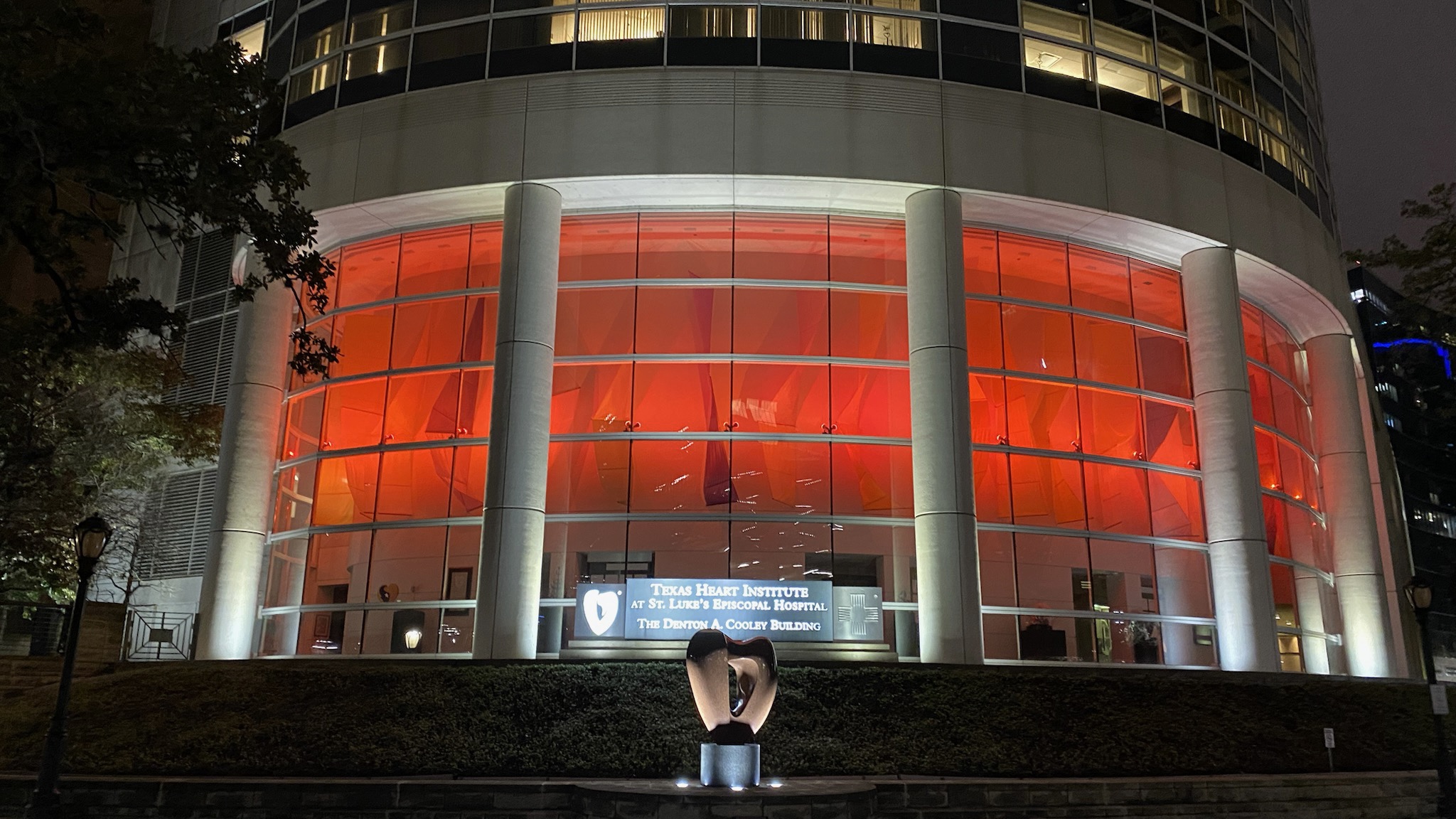The Texas Heart Institute’s Most Popular Scientific Articles from 2022

Altmetrics Attention Scores reveal the most popular articles from The Texas Heart Institute in 2022
The impact of a scientific article is often described by the number of times it is cited in other subsequently published articles.
Because the publication process is often slow, meaningful citation statistics may not be available for 1 to 2 years after the original article has been published, making it difficult to gauge how much interest the article attracts in real-time.
A newer, faster alternative to traditional citation impact metrics is alternative metrics, which gauge an article’s impact by measuring how many times an article has been mentioned in various media.
For example, Altmetric is a web-based service that provides alternative metrics data collected by tracking mentions of an article in news outlets and blogs, Facebook posts, and tweets, among other media.
Altmetric also notes how many readers have accessed the article through the reference-management tool Mendeley, as well as how many scholarly articles have cited it. These data are summarized in what Altmetric calls an “Attention Score.”
According to Altmetric’s data, in 2022, the most popular article published by investigators at The Texas Heart Institute was “Integrated multi-omic characterization of congenital heart disease,” by former Baylor College of Medicine graduate student Dr. Matthew Hill and colleagues in the Cardiomyocyte Renewal Laboratory at The Texas Heart Institute, under the leadership of Dr. James Martin.
The article, published in Nature, earned an Altmetric Attention Score of 490, putting it in the top 5% of all articles (in any discipline) scored by Altmetric. The statistics used to compute this score include 61 mentions of the article in various news outlets, 85 tweets, two blog posts, and two public Facebook posts.
Other popular articles recently published by authors at The Texas Heart Institute include “Hormonal therapies up-regulate MANF and overcome female susceptibility to immune checkpoint inhibitor myocarditis” (Sci Transl Med) by an author group including Drs. Xi and Cheng in the Electrophysiology Basic Research Laboratory; “Spirituality in patients with heart failure” (JACC: Heart Failure) by The Texas Heart Institute President and CEO Dr. Joseph G. Rogers and a nationwide group of investigators; and “LFA-1 activation enriches tumor-specific T cells in a cold tumor model and synergizes with CTLA-4 blockade” (J Clin Invest) by Darren Woodside and Peter Vanderslice and colleagues in the Molecular Cardiology Research Laboratory.
The top-scoring article published in The Texas Heart Institute Journal, which Almetric ranked as the 9th most popular by Investigators at The Texas Heart Institute, was “Using the Apple Watch to record multiple-lead electrocardiograms in detecting myocardial infarction: where are we now?” by Drs. Ke Li, Abdelmotagaly Elgalad, Cristiano Cardoso in the Center for Preclinical Surgical and Interventional Research, and Dr. Emerson C. Perin in the Center for Clinical Research.
Altmetric’s Top 10 Most Popular Articles Published by The Texas Heart Institute Investigators in 2022
1. Integrated multi-omic characterization of congenital heart disease
Hill MC, Kadow ZA, Long H, Morikawa Y, Martin TJ, Birks EJ, Campbell KS, Nerbonne J, Lavine K, Wadhwa L, Wang J, Turaga D, Adachi I, Martin JF.
Nature
2. Hormonal therapies up-regulate MANF and overcome female susceptibility to immune checkpoint inhibitor myocarditis
Zhang Y, Sun C, Li Y, Qin J, Amancherla K, Jing Y, Hu Q, Liang K, Zhang Z, Ye Y, Huang LA, Nguyen TK, Egranov SD, Zhao Z, Wu A, Xi Y, Yao J, Hung MC, Calin GA, Cheng J, Lim B, Lehmann LH, Salem JE, Johnson DB, Curran MA, Yu D, Han L, Darabi R, Yang L, Moslehi JJ, Lin C.
Sci Transl Med
3. Spirituality in patients with heart failure
Tobin RS, Cosiano MF, O’Connor CM, Fiuzat M, Granger BB, Rogers JG, Tulsky JA, Steinhauser KE, Mentz RJ.
JACC Heart Fail
4. LFA-1 activation enriches tumor-specific T cells in a cold tumor model and synergizes with CTLA-4 blockade
Hickman A, Koetsier J, Kurtanich T, Nielsen MC, Winn G, Wang Y, Bentebibel SE, Shi L, Punt S, Williams L, Haymaker C, Chesson CB, Fa’ak F, Dominguez AL, Jones R, Kuiatse I, Caivano AR, Khounlo S, Warier ND, Marathi U, Market RV, Biediger RJ, Craft JW Jr, Hwu P, Davies MA, Woodside DG, Vanderslice P, Diab A, Overwijk WW, Hailemichael Y.
J Clin Invest
5. Mutations in Hcfc1 and Ronin result in an inborn error of cobalamin metabolism and ribosomopathy
Chern T, Achilleos A, Tong X, Hill MC, Saltzman AB, Reineke LC, Chaudhury A, Dasgupta SK, Redhead Y, Watkins D, Neilson JR, Thiagarajan P, Green JBA, Malovannaya A, Martin JF, Rosenblatt DS, Poché RA.
Nat Commun
6. Association of optimism with cardiovascular events and all-cause mortality: systematic review and meta-analysis
Krittanawong C, Maitra NS, Hassan Virk HU, Fogg S, Wang Z, Kaplin S, Gritsch D, Storch EA, Tobler PN, Charney DS, Levine GN.
Am J Med
7. Long-term outcomes of total arch replacement versus proximal aortic replacement in acute type A aortic dissection: Meta-analysis of Kaplan-Meier-derived individual patient data
Sá MP, Jacquemyn X, Tasoudis PT, Van den Eynde J, Erten O, Sicouri S, Dokollari A, Torregrossa G, Kurz S, Heuts S, Nienaber CA, Coselli JS, Ramlawi B.
J Card Surg
8. Cell-type modeling in spatial transcriptomics data elucidates spatially variable colocalization and communication between cell-types in mouse brain
Grisanti Canozo FJ, Zuo Z, Martin JF, Samee MAH.
Cell Syst
9. Using the Apple Watch to Record Multiple-Lead Electrocardiograms in Detecting Myocardial Infarction: Where Are We Now?
Li K, Elgalad A, Cardoso C, Perin EC.
Tex Heart Inst J
10. Ciprofloxacin accelerates aortic enlargement and promotes dissection and rupture in Marfan mice
LeMaire SA, Zhang L, Zhang NS, Luo W, Barrish JP, Zhang Q, Coselli JS, Shen YH.
J Thorac Cardiovasc Surg




